Did you know there are over 130 different species of quail worldwide? These tiny birds are perfect for raising as both meat and egg-laying providers. Are you thinking about raising quail for meat and eggs? It takes a little effort to set up your quail-raising materials, but once you get the hang of it, you can have a steady stream of unique meals and little eggs.
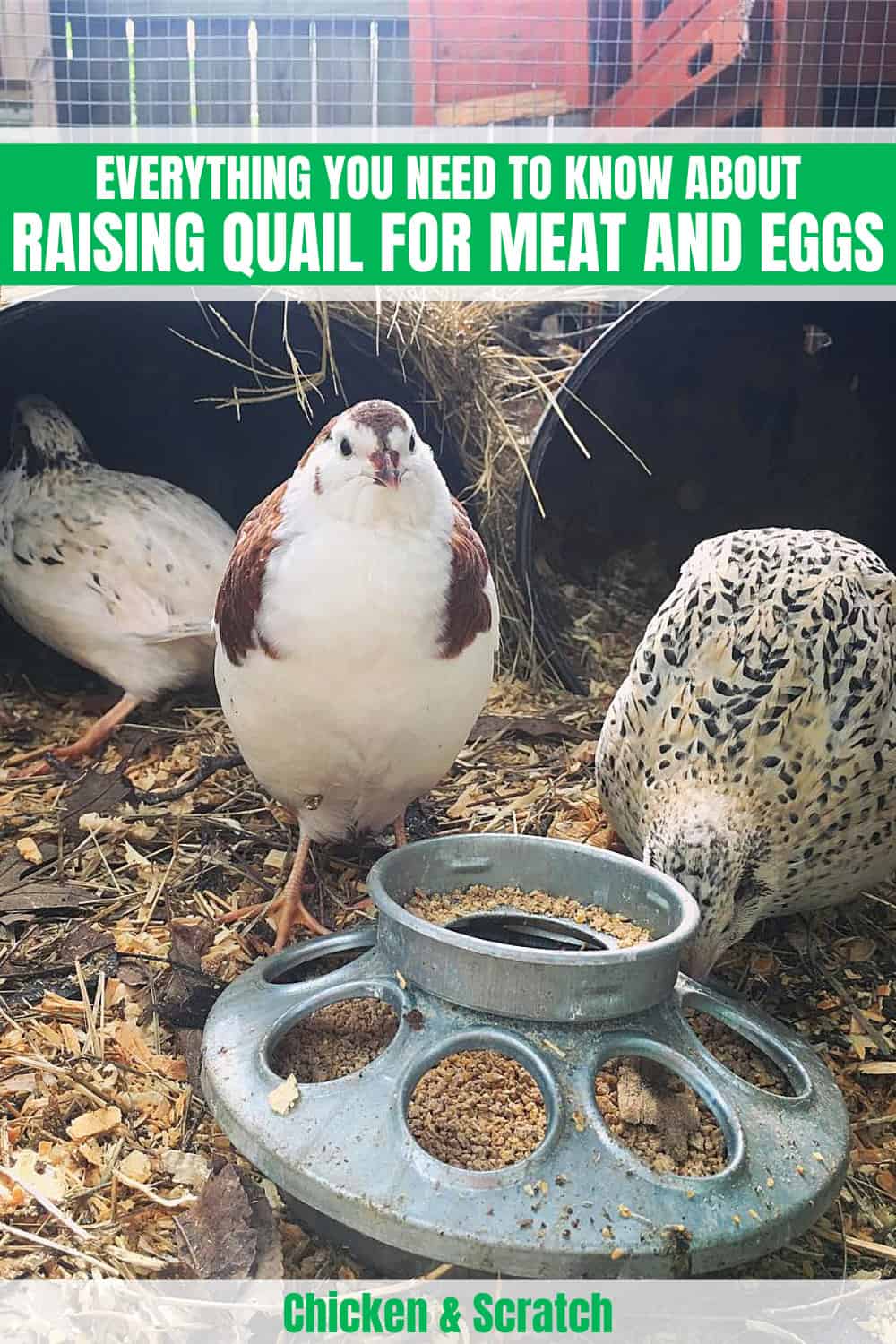
Many love quails; they’re a fun little bird to have in your backyard and pretty low maintenance. They have been known as a delicacy, but if you raise them yourself, you can access this dual-purpose bird all year round. Here’s our guide to raising quail for meat and eggs.
All About Raising Quails: The Overview
In recent years, raising quail has really taken off due to positive factors like its suitability for smaller-scale farms and even local backyard farming. Because they need less room overall and mature so rapidly in just under two months, producing marketable meat shortly thereafter.
Not only are the production costs lower, but the returns are quicker than with traditional poultry. Those diminishing return times have allowed new enterprising farmers looking for alternatives to poultry livestock an opportunity to benefit from this business method.
Not only that, quail eggs boast a high nutritional value even though they are significantly smaller than chicken eggs in quantity; their flavor stands head and shoulders above regular eggs on supermarket shelves. This has created new possibilities for farmers, from the culinary industry to health-conscious consumers. Quail farming also costs much less in feed, space, and maintenance, making it an attractive investment.
Check your city ordinances. Some may allow quail where chickens are banned. Others may require a separate game license as quail are considered game birds rather than pets.
Quails for Meat vs. Eggs: Which is the One For You?
There are two different approaches you can take to raising quails at home. Decide whether you want to raise quails for meat, eggs, or both. You should also decide if you will raise them to supply your family or make a profitable business selling excess products.
The reason you should decide about your priorities is simple. It will determine how deliberately you raise your birds. You can treat your birds equally if you choose to keep enough birds to feed your family the occasional quail dinner and regular eggs.
If you decide to focus on meat production (particularly if you are going to sell the meat by weight), you should separate your meat and egg-laying birds. You’ll treat them differently to maximize the preferred results for each type.
Egg-laying Quails
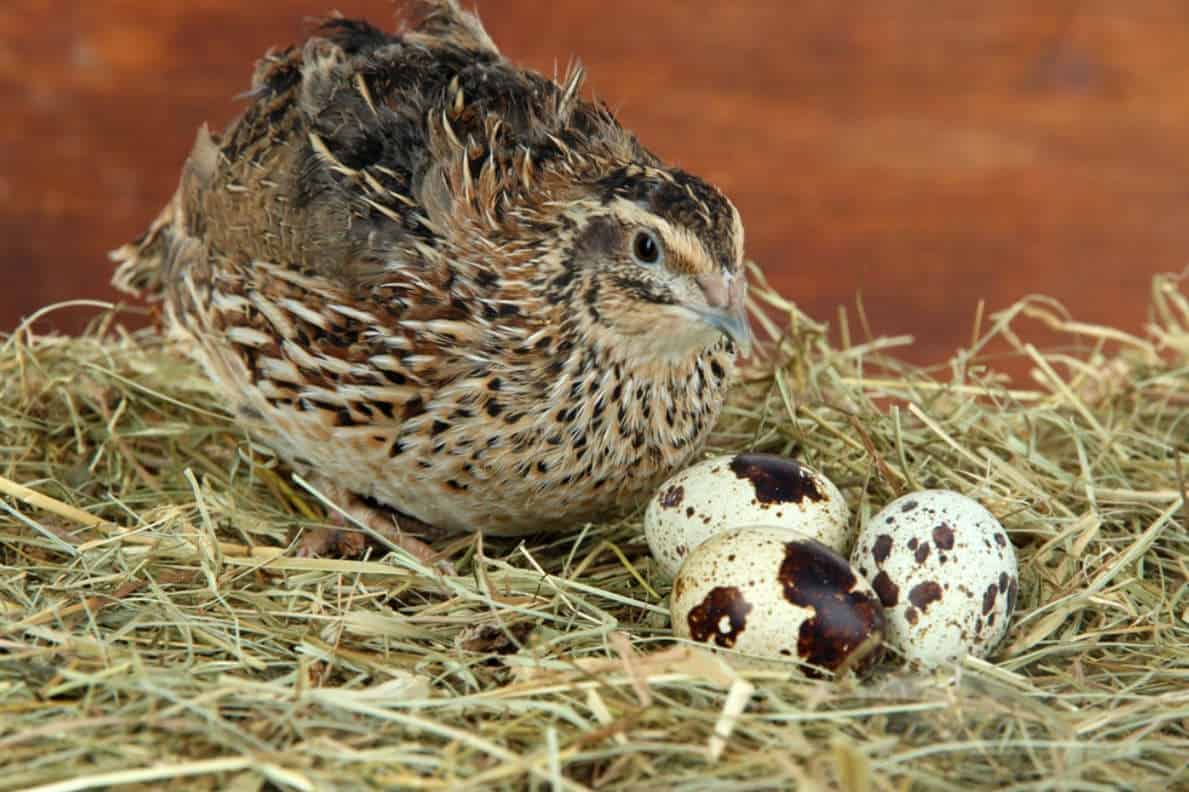
Are you interested in raising quails for their magnificent eggs? They are certainly smaller than chicken eggs but have many uses. They are considered quite a delicacy and can be used to replace chicken eggs in most recipes at a ratio of two quail eggs to one chicken egg.
Quails differ from chickens in their egg-laying habits. Chickens usually lay one egg per day in a designated nesting box. Quails may lay multiple eggs daily, leaving them spread throughout their living quarters.
It’s essential to check the coop multiple times daily for eggs, as the little birds easily trample them. You may consider keeping the quails in a purpose-built cage that allows eggs to collect away from where the quails walk. The separator keeps the eggs safe until you can manage them.
Quails that are being kept for eggs will need a specific diet that is high in calcium. The high egg production can be taxing on their tiny bodies. Ensure you feed them a layer’s blend of quail food. This should be supplemented by natural foraging for nutrient diversity where possible.
A layer blend or generic food blend will also be suitable if you intend to keep your quail for meat and eggs. It will provide adequate nutrition to keep the birds healthy and growing well but may not contribute to particularly heavyweights for meat purposes.
Quails will decrease their egg production after about nine months of age. The birds have a short life span in captivity. You should not expect your birds to live longer than a year or so.
It means that your turnover of quails will be pretty quick, so it pays to be prepared when planning your ability to supply to others. If you want to hatch quails by yourself, we have a complete guide to hatching your quail eggs.
Some egg-laying breeds are:
- Coturnix
- Bobwhite
- Button Quail
- Europian Quail
- California Qual
Meat Quails
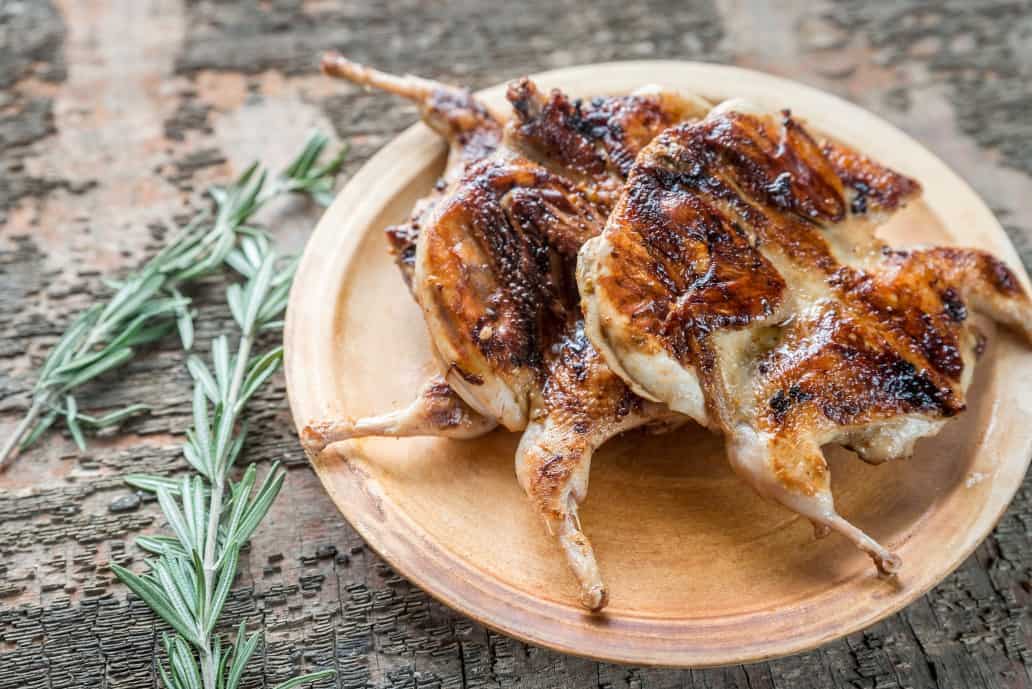
If you’re serious about raising quail for meat, there are some simple adjustments you can make to ensure more excellent meat production per bird. The first step is to keep the quails in relative darkness. Like most birds, quails become more active when the sun rises.
The sunlight triggers more physical activity, which helps to keep birds lean, and the meat may become challenging. Quails also lay more eggs when exposed to daylight on a regular schedule. Meat birds kept in the dark will still produce some eggs, although less than their well-lit counterparts.
You can also deliver a high-quality grower feed mix to your meat quails. This high-protein blend is specially formulated to stimulate fast growth in your flock. Combine this feed mix with limited movement access; don’t allow them to free range in the yard, and keep them in a smaller coop.
Supplementing the grower blend with access to fresh grasses, herbs, and bugs found naturally in the backyard is possible. Small, fully enclosed pens with wire mesh bases can provide this access while protecting the chickens from predators and preventing escapes.
Meat birds still require some space to move around. This is to ensure good health and to reduce fighting between birds. Use small pens to keep one or two quails per square foot of space. Ensure at least a quarter inch of the water trough and two inches of feed trough are accessible per bird.
Some meat quail breeds are:
- King Quail
- Coturnix
- Bobwhite
Best Quail Breeds for Beginners
The word quail was a blanket term for a big flock of birds. There are so many different breeds of birds that are known as quail. When discussing quails to raise for meat, I’m talking about the most common varieties – the Coturnix and the Northern Bobwhite.
Coturnix
There are two breeds of quail that are suitable for beginners. The Coturnix is by far the most popular. They are common backyard birds because they mature quickly and have more meat per bird than other breeds.
The Coturnix quail matures at only seven weeks old and begins laying eggs around that time. A mature Coturnix can lay over 300 eggs per year. You can also harvest the birds for meat at seven weeks as they reach their peak weight.
A regular Coturnix quail may give around 10 ounces of meat per bird. The jumbo Coturnix variety may offer up to 14 ounces of meat or more.
Coturnix quails migrated initially between Europe and Asia. Sometimes called Japanese quail, they have long been kept by people as domesticated good luck charms and raised for meat and eggs. They are very docile and used to being held with many other birds in small spaces.
Northern Bobwhite
The Bobwhite quail is native to the USA. There are many types of Bobwhite, known as New World species. They are smaller than Coturnix quail and can be more aggressive when kept close quarters. This is because they have only been domesticated for a few hundred years.
Bobwhites are smaller than Coturnix and may offer 6-10 ounces of meat per bird. Some varieties that have been bred for size may provide more. These quails will need up to four times the space per bird than Coturnix, which may impact how many birds you can fit in your yard.
What You’ll Need to Start Raising Quails?

Enclosed Pen
Before you start raising quails, you should know a few things. Unlike chickens, quails can fly. This means you’ll need to provide a secure enclosure that prevents escape. Remember that these are tiny birds, so choose pens with fine mesh. Regular chicken wire will allow chicks and smaller birds to escape quickly.
Maintain Cleanliness
Quails can be slightly more prone to disease than chickens, so keep their enclosures clean and well-ventilated. Cleanliness is important for keeping any type of animal health and promoting robust growth. Maintaining cleanliness in the quail coop reduces disease, parasites, and mites that affect their health and can cause conditions such as coccidiosis.
Quails thrive better in a dedicated clean environment free from these external pests and microbes which leads to stronger immune systemsThis reduces the risk of deformed eggs due to poor nutrition and hygiene issues. This can be very important if you plan to keep them for eggs.
Additionally, regular cleaning will ensure adequate air circulationn throughout the area so your birds are kept away from bad odors caused by bacteria-filled droppings introducing unwarranted stress on them resulting from inadequate ventilation quality.
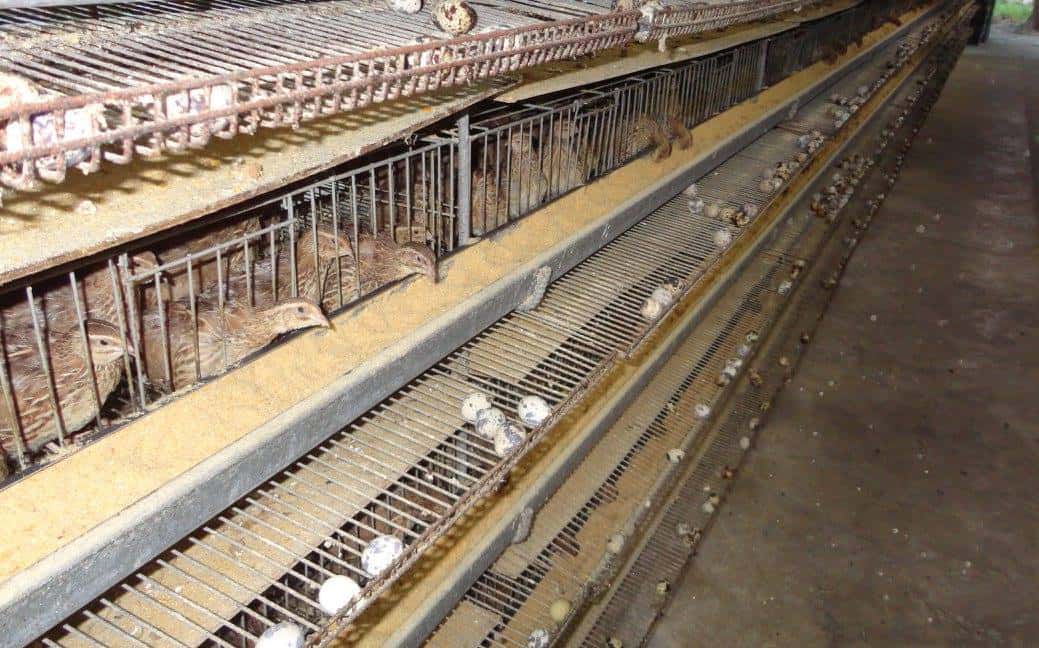
Provide More Space
Keep your quails apart from other poultry or animals to minimize cross-contamination. Keep them in enclosures with feeding and watering troughs. Although small, they are territorial birds, so they require some space to move around freely. I’ll tell you more specifics below.
By providing more space to quail, you can ensure that they have enough room for exercise and normal behavior such as preening, ground-searching, and dust bathing. Creating a spacious environment also means adequate food sources because expansive grounds will have a greater amount of insects available for poultry to feed on. Lastly, pests that may attack or transmit infections are all held at bay with good hygiene maintenance combined with excellent ventilation.
Quail Raising Tips
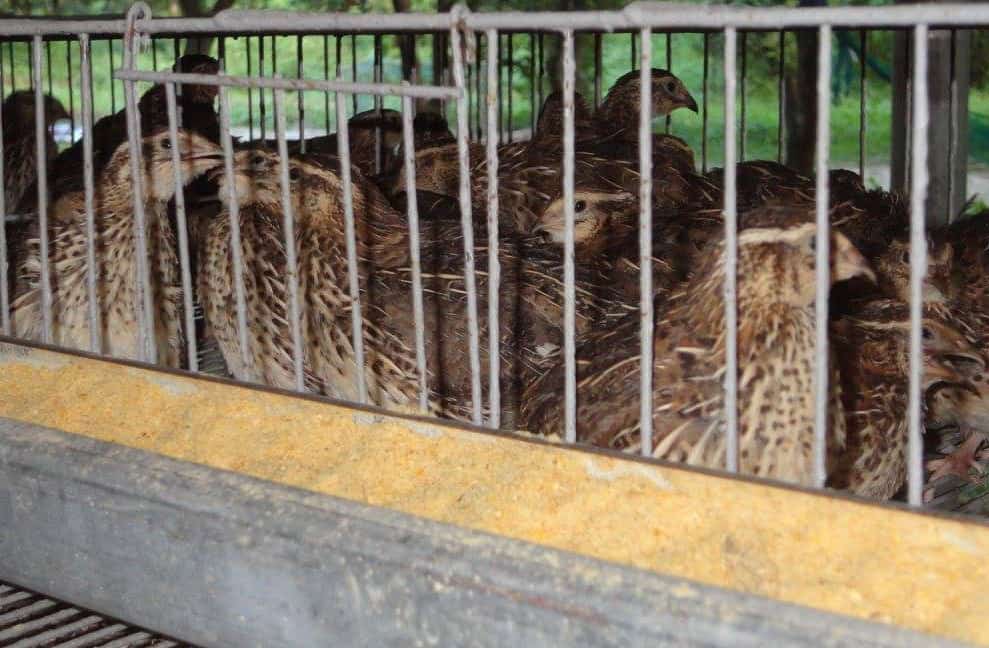
Here are my top takeaway tips:
- Coturnix quails produce more meat and require less space than Bobwhites
- Quails can fly, so don’t let them free-range in your backyard
- Quails can lay up to 300 eggs a year
- Some states require a game license, so check before purchasing your flock
- Treat your meat birds with specific feed and conditions to see a higher yield
Summary
So what do you think? Are you game to begin raising quails in your backyard? They are fun little birds to keep, although the maintenance can sometimes feel a little more demanding when compared to backyard chickens.
Have you raised quails before? I’d love to hear about your experiences. Please leave a comment below.

Joseph Hudson has been raising chickens for over 15 years. In 2018, he completed the Agriculture & Natural Resources program at Mt. San Antonio College. He currently raises over 1400 chickens on his 7.5-hectare farm. He keeps sharing his experience on raising healthy and happy chickens on Chicken Scratch The Foundry.









That was a great article! I’m thinking about alternative food sources as it seems our food supply chain is quite vulnerable. Because I have land I think I’ll stick to chickens but it seems to me quail would be a great option for folks living in the city, an apartment et al. Thank you for taking the time to share!
Thank you for all that wonderful information.
Was wondering, due to the current climate is there a need/demand for Quail meat and Quail eggs
Any available information will be gratefully received.
Good stuff people. Thank you for your time and input. Trying to make some decisions
on the best quail to raise for hunting & meat. Looks like either Bob Whites or Coturnix would be my best bet. Thank you for your time & input.
Sincerely,
Art Miller
What is the % of protein and what is a good mix for my Quail to lay eggs?
Very good info
Where may I get the quails to start? The contact please.
Did it about ten years ago. Thanks.
I am want to buy some bobwhite quail. we have raised them before. I am want know how much they are?
At what age would you harvest a meat quail? I would want to acquire eggs, but would also, eventually, harvest the meat? Is there a time schedule for the two?
Hi How can I get the bobwhite quail s and at what cost